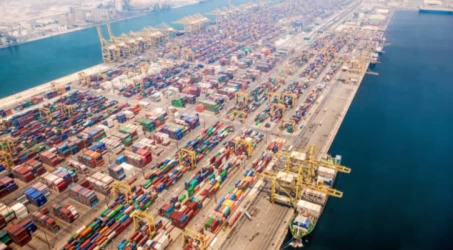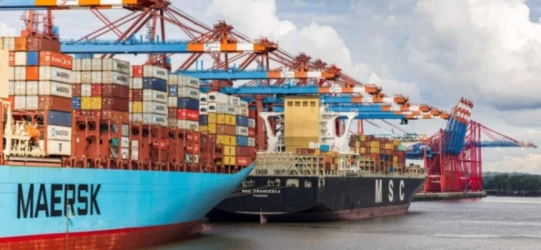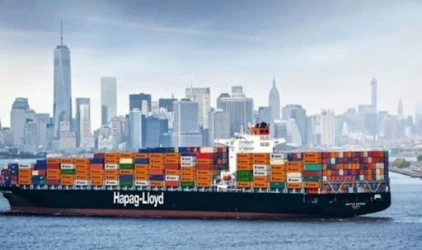Common Terms in Maritime Transport
Maritime transport is a vast and complex field with its own unique terminology. Understanding these terms is crucial for anyone involved in the shipping industry, whether you’re a seasoned professional or a newcomer. This article will cover some of the most common terms used in maritime transport, providing a comprehensive guide to help you navigate the seas of shipping jargon.
1. Abaft
- Definition: A point beyond the midpoint of a ship’s length, towards the stern relative to an object or point of reference.
- Usage: “The lifeboats are located abaft the main mast.”
2. Abeam
- Definition: On the beam, a relative bearing at right angles to the centerline of the ship’s keel.
- Usage: “The lighthouse is abeam of our current position.”
3. Ballast
- Definition: Heavy material placed in the lower holds of a ship to improve stability.
- Usage: “The ship took on ballast to ensure a smooth voyage.”
4. Bill of Lading (B/L)
- Definition: A legal document issued by a carrier to acknowledge receipt of cargo for shipment.
- Usage: “The bill of lading must be presented to claim the goods.”
5. Bow
- Definition: The front part of a ship.
- Usage: “The bow of the ship cut through the waves.”
6. Bulk Carrier
- Definition: A ship designed to transport unpackaged bulk cargo, such as grains, coal, ore, and cement.
- Usage: “The bulk carrier docked to unload its cargo of iron ore.”
7. Cabotage
- Definition: The transport of goods or passengers between two places in the same country by a foreign vessel.
- Usage: “Cabotage laws restrict foreign ships from operating between domestic ports.”
8. Charter Party
- Definition: A contract between the owner of a vessel and a charterer for the use of the vessel.
- Usage: “The charter party outlined the terms of the vessel’s hire.”
9. Container Ship
- Definition: A cargo ship that carries all of its load in truck-size intermodal containers.
- Usage: “The container ship arrived with goods from around the world.”
10. Deadweight Tonnage (DWT)
- Definition: The total weight a ship can carry, including cargo, fuel, crew, and provisions.
- Usage: “The vessel has a deadweight tonnage of 50,000 tons.”
11. Draft
- Definition: The vertical distance between the waterline and the bottom of the hull (keel).
- Usage: “The ship’s draft determines how deep it sits in the water.”
12. Dry Dock
- Definition: A dock that can be drained of water to allow the inspection and repair of a ship’s hull.
- Usage: “The vessel was taken to dry dock for maintenance.”
13. Freight Forwarder
- Definition: An agent who arranges the transportation of goods on behalf of the cargo owner.
- Usage: “The freight forwarder handled all the logistics for the shipment.”
14. Gross Tonnage (GT)
- Definition: A measure of the overall internal volume of a ship.
- Usage: “The cruise ship has a gross tonnage of 100,000 GT.”
15. Hatch
- Definition: An opening in the deck of a ship through which cargo is loaded and unloaded.
- Usage: “The crew opened the hatch to access the cargo hold.”
16. Incoterms
- Definition: International commercial terms published by the International Chamber of Commerce (ICC) that define the responsibilities of buyers and sellers in international transactions.
- Usage: “The contract specified FOB (Free on Board) as the Incoterm.”
17. Keel
- Definition: The central structural base of a ship running along the bottom from bow to stern.
- Usage: “The keel is the backbone of the ship.”
18. Laden
- Definition: Loaded with cargo.
- Usage: “The ship was fully laden with goods.”
19. Manifest
- Definition: A detailed list of a ship’s cargo, passengers, and crew.
- Usage: “The manifest was checked by customs upon arrival.”
20. Nautical Mile
- Definition: A unit of measurement used in maritime navigation, equivalent to 1.852 kilometers.
- Usage: “The ship traveled 500 nautical miles.”
21. Port
- Definition: The left side of a ship when facing forward.
- Usage: “The lifeboats are located on the port side.”
22. Starboard
- Definition: The right side of a ship when facing forward.
- Usage: “The captain ordered a turn to starboard.”
23. Stevedore
- Definition: A person or company engaged in loading or unloading cargo from ships.
- Usage: “The stevedores worked quickly to unload the containers.”
24. Tanker
- Definition: A ship designed to transport liquid cargo, such as oil, chemicals, or liquefied natural gas.
- Usage: “The tanker docked to offload its cargo of crude oil.”
25. TEU (Twenty-foot Equivalent Unit)
- Definition: A standard measure used to describe the capacity of container ships and terminals, based on the volume of a 20-foot-long container.
- Usage: “The port handled 2 million TEUs last year.”
26. Trim
- Definition: The distribution of weight within a ship to ensure stability and optimal performance.
- Usage: “The crew adjusted the trim to balance the ship.”
27. Waybill
- Definition: A document issued by a carrier giving details and instructions relating to the shipment of a consignment of goods.
- Usage: “The waybill must accompany the shipment.”
28. Wharf
- Definition: A structure on the shore of a harbor where ships may dock to load and unload cargo or passengers.
- Usage: “The ship was moored at the wharf.”
Understanding these terms is essential for efficient communication and operation within the maritime industry. Whether you’re involved in shipping, logistics, or simply interested in maritime activities, this glossary provides a solid foundation for navigating the complex world of maritime transport.
if you have a specific question or need more details, Iran's logistics experts are your answer!











